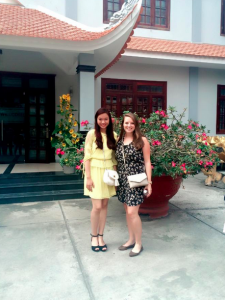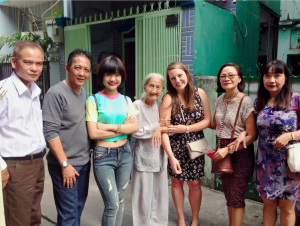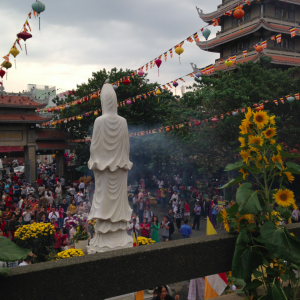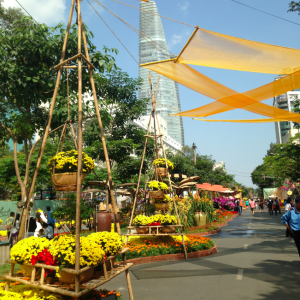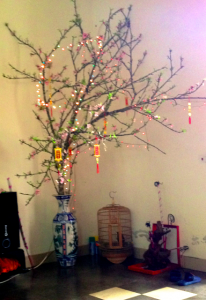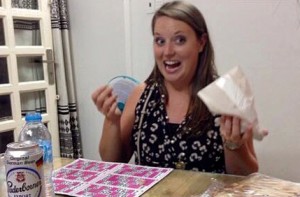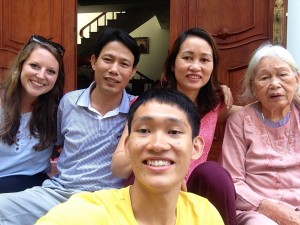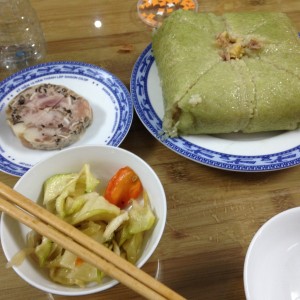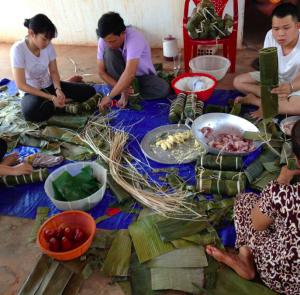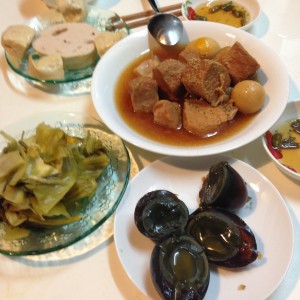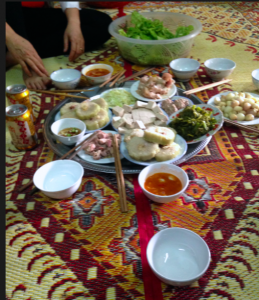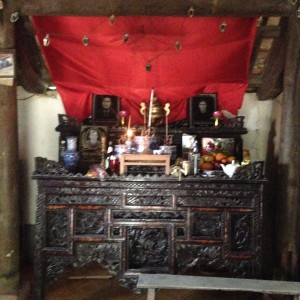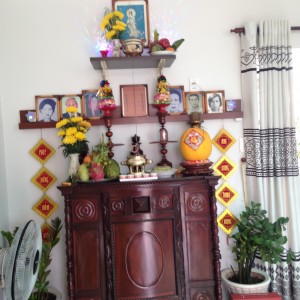Cheers to Tết
The Vietnamese lunar new year, or Tết, is unlike any holiday I have experienced before. This celebration is much anticipated and very unique because Vietnam is one of three countries that celebrates the lunar new year worldwide. The Vietnamese new year involves eating, drinking, praying, loving, and even more eating!
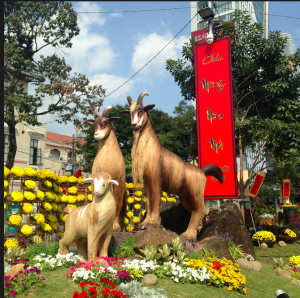
-
Flower display in Saigon on Ham Nghi Street, District 1
Before the first day of Tết, there are many preparations to be done including cooking, cleaning, and buying flowers. Also, families should buy enough food to feed family, friends, and neighbors because most stores close for three days – recognizing the holiday for all employees. This is unlike Christmas Day in America when convenient stores and grocery stores are open under limited hours. No, everything shuts down.
After the weeks preparing for Tết holiday, it is time to celebrate the actual holiday.
I began my Tết holiday in Saigon with my vietnamese partner and her family. First, we visited the most popular Buddhist temple in Saigon at 8:00am to pray for peace, love, and prosperity… And they were not frugal with the incense!
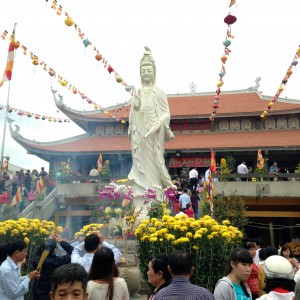
-
Pagoda in Saigon, Vietnam
After the temple, we followed tradition and visited her uncle’s mother as a tradition during Tết:
The first day is for visiting the father’s family.
The second is for visiting the mother’s family.
The third is for visiting teachers.
Afterwards, we visited the flower street in Saigon. This is a main street in downtown that temporarily closes and is decorated with 4 blocks of indigenous flower displays.
Flowers are an important aspect of Tết for the Vietnamese. Much like a Christmas tree, the Tết tree includes the regional flower and twinkle lights. “Hoa Mai” or apricot blossoms grow in the South and “Hoa Dao” or cherry blossoms from the North.
Following this, we visited her aunt’s house to receive lucky money, eat lunch, and spend time with family. It was a big deal for her family to invite me on the first day. Following strict tradition, I should not have been there because I am not immediate family. Nonetheless, I am extremely grateful for this experience, and I had a blast! It was a wonderful day full of eating, drinking, and even gambling.
For the second day of Tết, I started at 4:30am off to the airport en route to North Central Vietnam to the city of Vinh to spend the lunar new year with my friend Công and his family. This was an experience I will never forget because I was able to experience the holiday fully immersed in a family’s celebration.
I was also able to relate the similarities and differences between central and southern celebrations. Some main components that are nationally celebrated in Vietnam include:
Food:
Food is a key component of Tết holiday. Not only do the Vietnamese celebrate Tết , they “eat” Tết or in Vietnamese Ặn Tết.
Traditional Tết cakes:
Bánh Tét: traditional sticky rice cake served during Tết celebration. A cylinder shaped cake made from sticky rice, bean, and pork then wrapped in banana leaves, tied, and steamed for 14-16 hours. This cylinder cake represents the atmosphere of the earth.
Bánh Chưng: The bánh Tét counterpart – includes the same ingredients but is square in shape to represent the earth.
I had the opportunity to make these cakes at my friend, Thien’s aunt’s house in the countryside of Đồng Nai. I was invited to join in the entire family’s preparation for Tết – all 18 family members plus 4 guests in a 2 bedroom house. While these conditions may not seem ideal, I could not have felt more welcomed. I must say, sleeping outside on a hammock is magical. I enjoyed getting to visit a countryside home and experiencing this way of life and realizing how a family so large can develop such a close connection, especially during the exciting time of Tết. I was extremely grateful for this opportunity.
These cakes are served with traditional staples such as pork, boiled chicken, pickled anything (onions, shallots, leeks, carrots, etc.), and sticky rice.
The meals were absolutely delicious and wonderful experiences because I was able to feel the love and community of each family as they shared a meal together.
Ancestor worship:
Part of a traditional Tết meal includes offerings to the ancestors. Not only do living family members eat, the deceased must eat as well. Food, drink, and wealth are offered to ancestors as a way for living family members to take care of the deceased in their afterlife.
Hospitality and relationships:
Visitors show up all the time and unexpected, even as early as 7:00am. No matter the hour, food and beverages must be offered to guests because it is a sign of respect and hospitality. Ideally, alcoholic beverages will be shared (again, no matter the hour) in order to cheers each other and family for the new year.
The Vietnamese Tết holiday is unlike any holiday worldwide due to the strong traditions, nationalism, and connection to others both living and deceased. I highly recommend experiencing this holiday at some point in life – you will not regret it. I have evaluated my perceptions of relationships both family and friends, hospitality, and spirituality after witnessing this incredible celebration in Vietnam.
If you have any questions about my experience during Tết holiday or Vietnam in general, feel free to email me at mlindsay@luc.edu.
As always, thanks for reading and… Chúc mừng Năm mới! Happy New Year!
